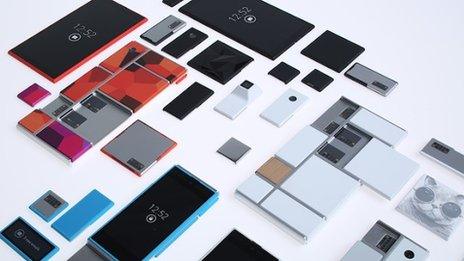Google rethinks Project Ara modular smartphones
- Published

Project Ara handsets will be able to contain up to six modules adding functions
Google has rethought its plans for a modular smartphone and now plans to release a less customisable model than it had first proposed.
The revised Project Ara handset no longer allows its main display or processors to be swapped out.
Google said the new design meant it could offer more space to other parts that added unusual functions.
One expert said the move increased the initiative's chance of success.
"A fully modular smartphone would have gone against every trend in the industry to integrate components tightly together and make smaller, faster devices as a result," said Ian Fogg, from the consultancy IHS Technology.
"By putting the front display, the processors and some of the core functionality into the frame's board, rather than on removable modules, it has significantly de-risked the project.
"That may not offer as much flexibility to users as the original plan, but it makes it easier for Google to bring Project Ara to market quickly."
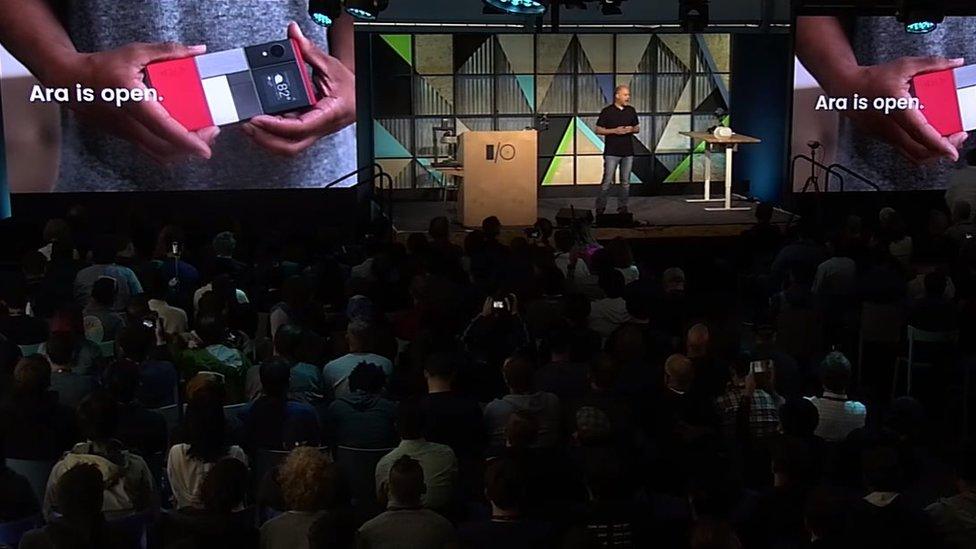
Google is making Project Ara open-source, so other manufactures can adopt its designs without paying for the privilege
Scaled-back ambition
Google originally revealed it was working on a customisable phone in October 2013, after its Motorola division - which it later sold - teamed up with the creator of the Phonebloks concept.
Just over a year later, Google announced it would shortly begin a trial in Puerto Rico, where it intended to offer consumers a frame and a range of 20 to 30 clip-on modules.
A promotional video published at the time suggested one of the benefits would be that owners could easily swap out a cracked screen, external and replace it with a new part.
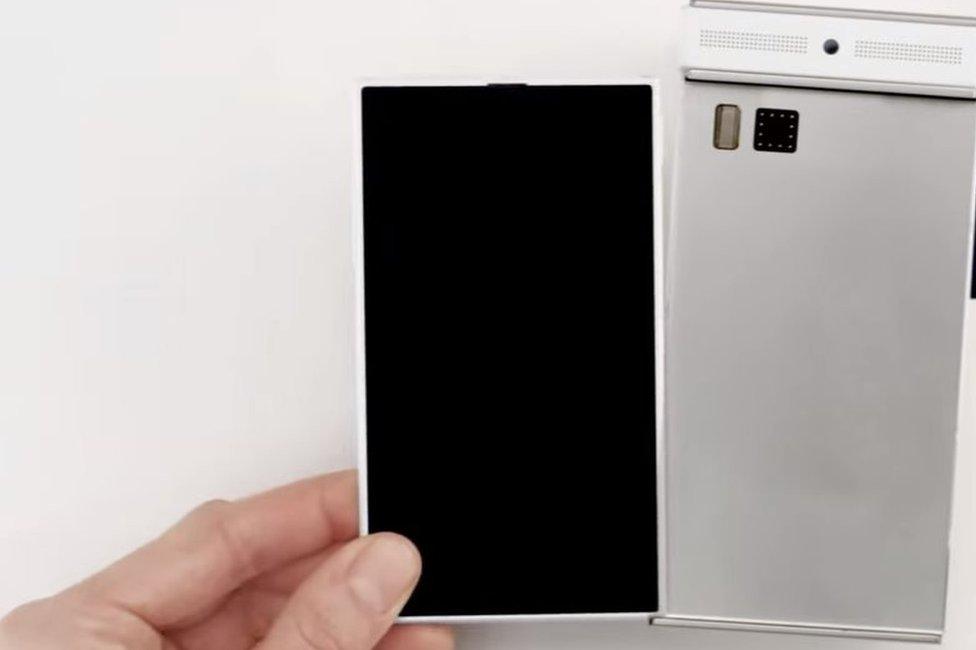
The original concept allowed users to swap out the main display, which will no longer be possible
But in August 2015, the pilot was cancelled and there was a change in leadership.
Ara's lead engineer Rafa Camargo described the new design as putting "modularity where it counts".
"We've integrated the phone technology in the frame. That frees up space for modules that will create and integrate new functionality that you cannot get on your smartphone today," he told developers at Google's IO conference in California.
He added that the revision meant the phone's frame could also become thinner and modules could be swapped without having to reboot the device.
The project's head of creative, Blaise Bertrand, said that one potential module would be a glucometer for people with diabetes, which he said was something mass-market handsets were unlikely to incorporate as standard.
He added that an advantage over current kit was that the phone could track a user's blood-sugar level alongside their activity levels rather than in isolation.
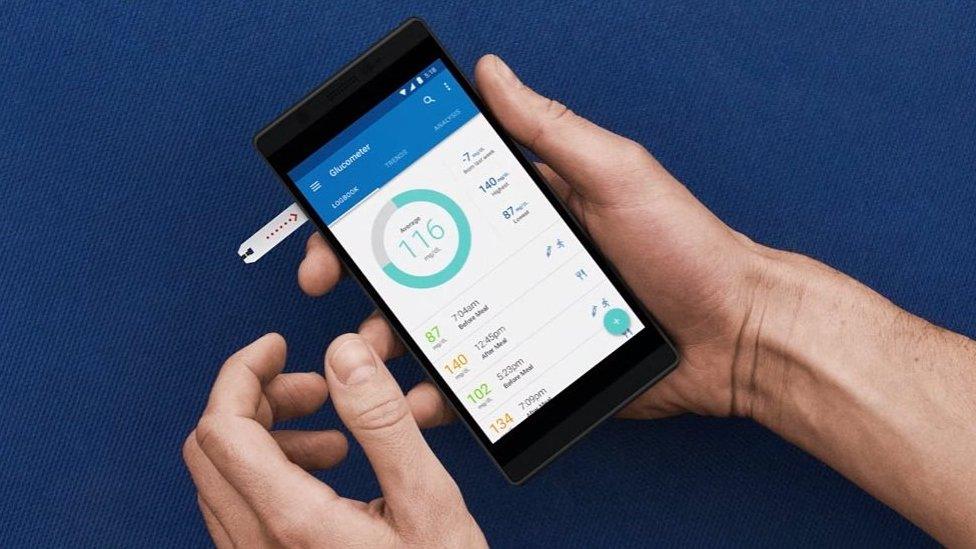
Google proposed a module could be used to help diabetic patients take glucose readings
Other examples included:
a secondary e-paper display
a high-resolution camera
loud speakers
expandable storage
a kickstand
Mr Bertrand said his team was already working with Samsung, iHealth, Toshiba, Panasonic and Harman among others, to make the parts.
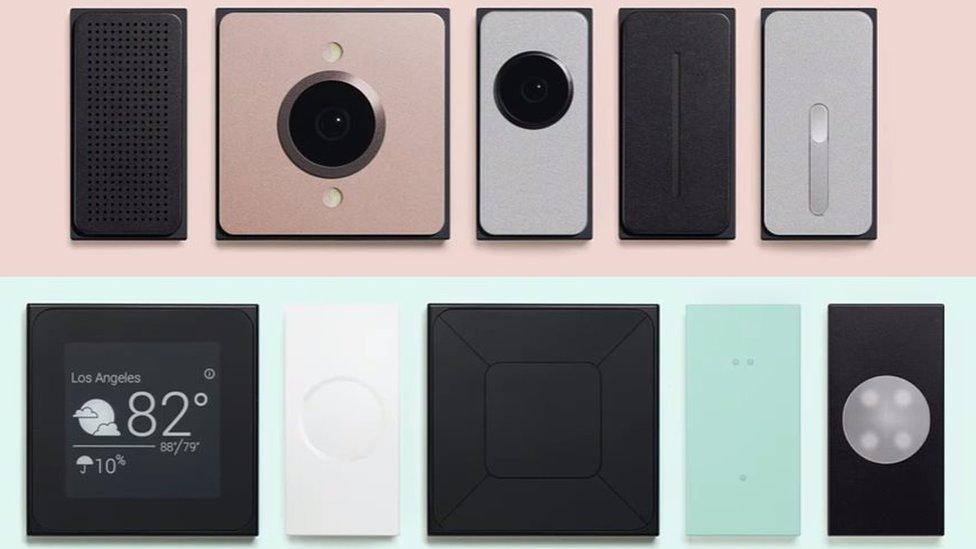
Google says it is working with more than a dozen third parties to make modules
Voice eject
The current prototype can incorporate up to six modules, although Mr Camargo said that future frames could be larger or smaller.
Each slot should work for at least "10,000 connect cycles" he added, and the device could be made to eject one of the parts by giving it a voice command.

Ara phones can let the same type of module be fitted more than once, for example several speakers to play music louder
Google is now promising to release a developers' edition of the phone and "a few" modules before the end of the year, and aims to sell a version to the public in 2017.
It also intended to extend the concept to other types of computers, Mr Camargo added.
Swappable parts
LG recently launched a modular phone of its own, to mixed reviews.
LG's phone has swappable parts that enable extra features
While many critics praised the idea behind the LG G5, they highlighted that only two add-on parts - a high-definition audio processor and a camera grip - currently took advantage of the facility.
"Google needs to make it very easy for developers to make the modules and easy for them to distribute and sell them," said Mr Fogg.
"How they are brought to market is going to be very important."
- Published21 February 2016
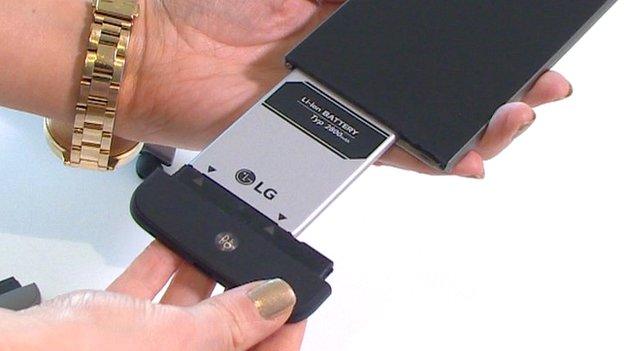
- Published18 August 2015
- Published29 October 2013
